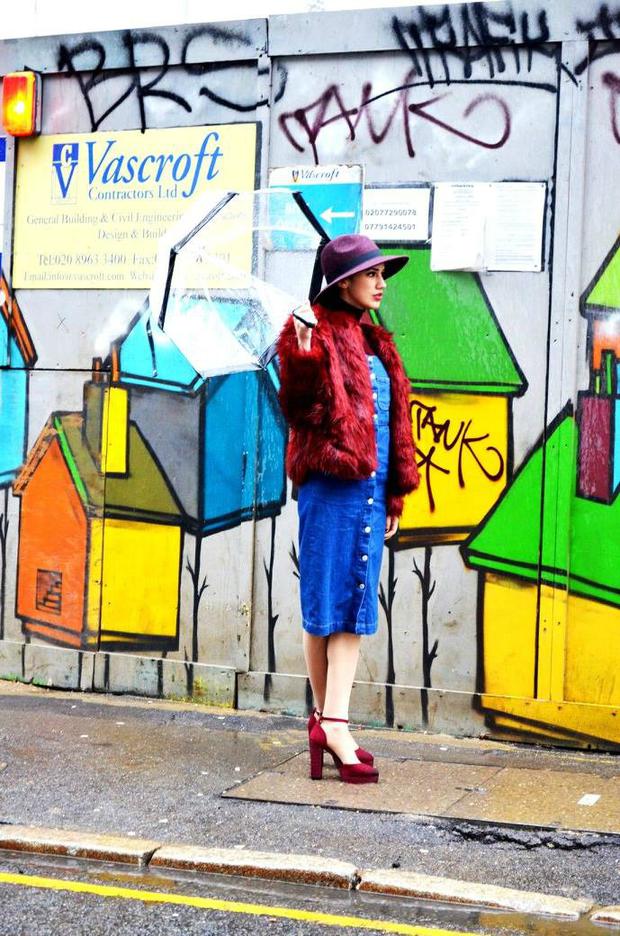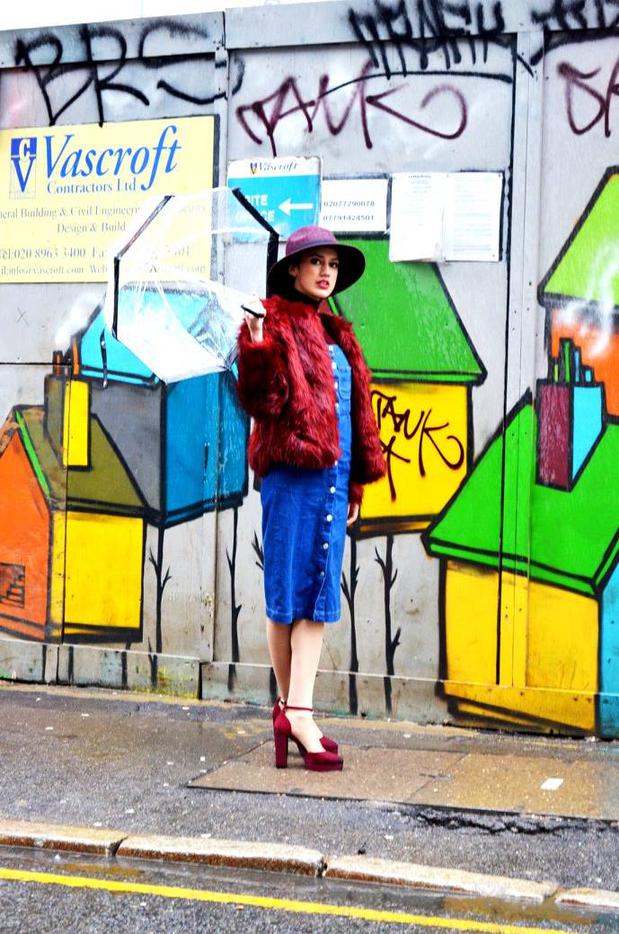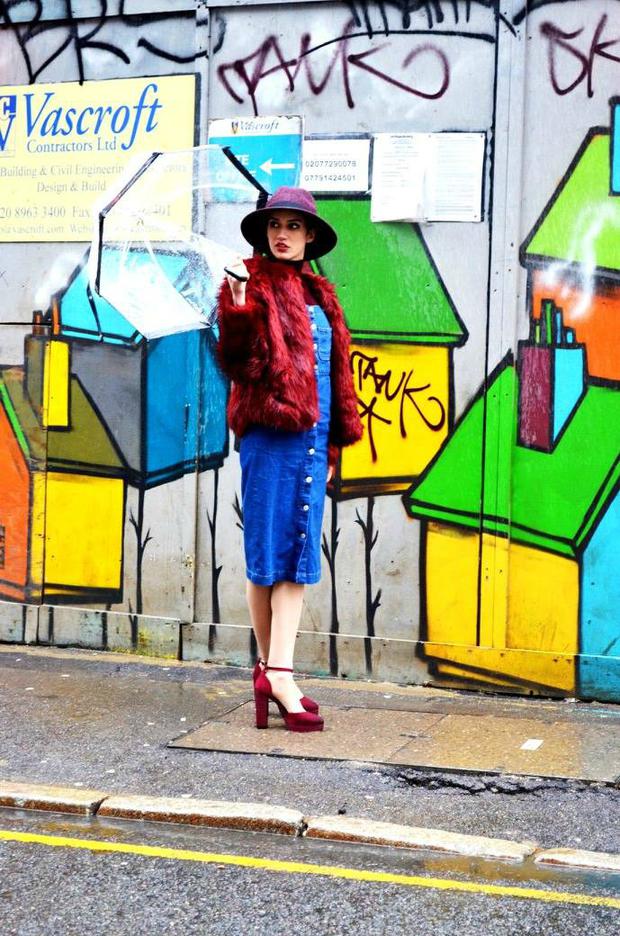Gone
‘Lurking in corners the tormenters await feasting upon vunerable flesh, Vultures circle the remains beaks turned up in contempt, sick to their stomachs at the sight, Haunting, disconcerting melodies drown out their cries for help, a pregnant silence their last sound,One by one they are plucked off like maggots in a rotting heap, Their lives flash before their eyes, the spark is gone, All is left is a severed sliver of hair’

Inclusitivity in the fashion industry has always been highly contested with critics claiming that its subjective, eurocentric attitudes created a barrier between ‘them’ and the ‘social other’. Their explicit rejection of those who did not fit the social norm goes beyond ‘different tastes’ and instead focuses on aesthetic differences; the disabled, ethnic minorities, the LGBTQ community and those with special needs are all groups that have been deemed as ‘too different’ to represent the fashion industry. Come 2015 the fashion industry knew that its attitudes torwards these social minorities had to change because consumers were given evidence that the disabled were ‘underepresented’ and mistreated by the fashion industry. Disgruntled consumers began campaigning for the advocation of disabled models who quite rightly said that the fashion industry was losing profit and stock shares because it failed to represent the majority of its clients. By ignoring the disabled market the fashion industry was becoming increasingly powerless as the strength of social media forced them to include disabled models as part of their fashion campaigns. When countless social media based petitions rallied to get Madeline Stuart recognized as a model and walk at NYFW, it proved that an online presence can help represent the disabled community who have fought decades to reach this moment. But is fashion inclusive of disability or is disability fashions forgotten diversity fronteir?
There has been alarming concern that the fashion industries inclusion of disabled models is merely a tokenistic gesture whereby the models become pawns in their ultimate goal to ‘diversify’ their image without aiding the growth of the disabled community. When Nyle Di-Marco won the final season of America’s Next Top Model consumers raised their concerns that Tyra Banks had chosen him purely because he was deaf and not because he possessed extraordanairy modelling talents. Noone will ever know what motivated her into choosing Nyle as the winner but I for one believe that it was not a tokenistic gesture but a step in the right direction. For decades during her peak as a supermodel Tyra faced criticism because she was not only ‘black’ but also because she had ‘curves’ dubbed as the fattest supermodel in many newspaper columns. Yet Tyra remains one of the most iconic supermodel faces in the industry 40 years on because she represented ‘difference’ and rejected ‘homogeneity’ and that is an ethos that Nyle Di-Marco hopes to exhibit in his role as a fashion model and disability advocate.
Nyle’s popularity in the fashion industry may have temporarily diversified the image of the fashion industry but there is still poor engagement with the rest of the disabled community. Seen as a symbol of pity, the disabled community have often been misunderstood as ‘needing help’ when in reality they are emblems of strength who desire to change the scope and breadth of fashion models available. When Lucy Jones won her school’s prestigious Womenswear Designer of the Year award for her collection Seated Design-which sought to empower wheelchair users through more comfortable clothes adapted to their bodies- the fashion community was astounded. Many questioned why the disabled community would want to ‘distance themselves from normality through clothing that highlighted their status as disabled persons. Here is the answer, the disabled community are not ashamed of their physical or mental disabilities but use it as a weapon against an industry that strives for perfection. Because the truth is real beauty is imperfect. There is beauty in the flawed scarred cheek, there is beauty in the wheelchair and there is beauty in YOU.

By rejecting the the fashion norm Lucy Jones not only highlighted the exploitation of disabled models as ‘tokens’ of goodwill but also distanced herself by creating an authentic clothing line for the disabled community. Therefore as doctoral researchal and blogger Cat Smith stated, the representation of disability should be seen as ‘much as an artistic possibility as it is in terms of diversity or inclusion’. The fashion industry needs to recognize that including a disabled model in their catwalk is more than just a weak attempt to diversify their image but a change to explore new textures, silhouettes and a completely different audience to what they were previously accustomed to. The disabled are artists too and many are frustrated that their physical or emotional impairments have represented them as temporary distractions to target consumers but with few rewards in return for the disabled models hard work. The question therefore is if the fashion industry are ‘seemingly’ making the changes to diversify their image and include disabled fashion models does it mean that their approach is inathentic and reflective of their inability to understand the disabled community?
Regardless of the circumstantial evidence, the fashion industry still has a long way to go before it can call itself inclusive and its weak attempts to hire disabled models through the power of social media only validates how the disabled are being used as tokens to diversify their image and that is an ethos that rejects everything that I stand for.

Do you believe that fashion is inclusive or is disability fashions diversity fronteir?
Photography: Jumanna Khanom
Demin Dungaree Midi : Topshop
Turtleneck, Shoes and Hat: Primark
Coat: Berksha
Leave a Reply